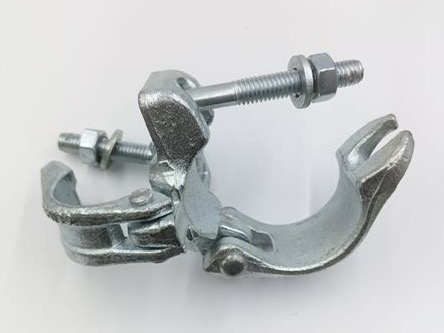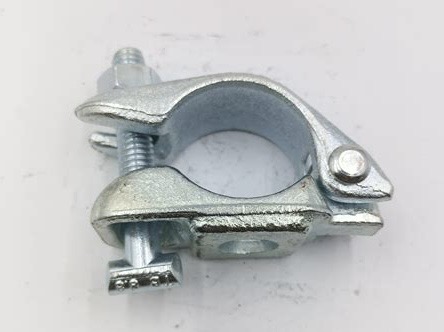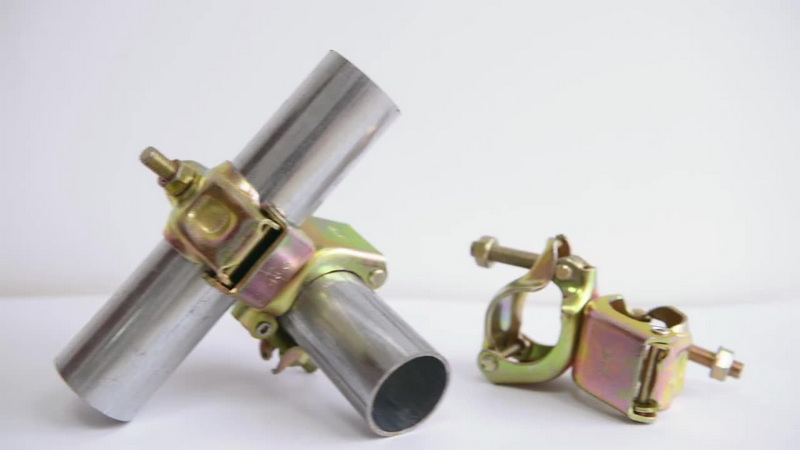Content Menu
● Introduction to Scaffolding Coupler Standards
● Major International Standards for Scaffolding Couplers
>> BS 1139: British Standard for Scaffolding
>> EN 74: European Norm for Scaffolding Couplers
>> AS/NZS 1576.2: Australian/New Zealand Standard
>> OSHA Regulations (USA)
>> IS Standards (India)
● Key Requirements in Scaffolding Coupler Standards
>> Material and Manufacturing
>> Load Capacity and Testing
>> Design Specifications
>> Classification and Marking
● Importance of Compliance with Scaffolding Coupler Standards
● Conclusion
● FAQ
>> 1. What is the main difference between EN 74 Class A and Class B couplers?
>> 2. Are scaffolding couplers from different standards compatible?
>> 3. How often should scaffolding couplers be inspected?
>> 4. What materials are commonly specified in scaffolding coupler standards?
>> 5. Is training required to handle scaffolding couplers safely?
● Citations:
Scaffolding couplers are fundamental components in the construction industry, used to securely connect scaffold tubes and ensure the stability and safety of scaffolding systems. Given their critical role, scaffolding coupler standard compliance is essential to guarantee safety, reliability, and interoperability across different scaffolding systems worldwide. This article provides an in-depth overview of the key international standards governing scaffolding couplers, including their specifications, testing requirements, classifications, and certifications.

Introduction to Scaffolding Coupler Standards
Scaffolding couplers must meet strict international standards to ensure they can withstand the forces and loads encountered on construction sites. These standards specify requirements for materials, design, manufacturing processes, load capacities, and testing methods. Adherence to these standards helps prevent accidents, ensures compatibility between components, and facilitates global trade of scaffolding products.
Major International Standards for Scaffolding Couplers
BS 1139: British Standard for Scaffolding
- Scope: BS 1139 covers steel scaffolding tubes, couplers, fittings, and accessories.
- Details: It specifies requirements for prefabricated access scaffolds, including drop-forged double couplers, pressed double couplers, swivel couplers, sleeve couplers, and putlog couplers.
- Importance: BS 1139 is widely recognized and used in the UK and many Commonwealth countries, serving as a benchmark for quality and safety[1][5].
EN 74: European Norm for Scaffolding Couplers
- Scope: EN 74 focuses specifically on scaffolding couplers, loose spigots, and baseplates for steel tubes with an outside diameter of 48.3 mm and a minimum wall thickness of 3.2 mm.
- Classification: EN 74 is divided into Class A and Class B couplers.
- Class A: Establishes basic safety criteria for slip resistance, distortion, and structural integrity.
- Class B: Imposes stricter distortion requirements, suitable for heavy-duty construction with higher load demands.
- Application: EN 74 is the European standard for couplers and is often harmonized with BS 1139.
- Testing: Includes prototype testing and ongoing production verification to ensure compliance[1][6][11].
AS/NZS 1576.2: Australian/New Zealand Standard
- Scope: Specifies requirements for couplers and accessories for light, medium, heavy, and special duty scaffolding.
- Highlights:
- Incorporates performance requirements aligned with EN 74.
- Covers tightening torque, material specifications, and load testing.
- Includes detailed appendices on vertical load tests and component specifications.
- Significance: This standard ensures couplers used in Australia and New Zealand meet high safety and durability criteria[4][8].
OSHA Regulations (USA)
- Scope: OSHA (Occupational Safety and Health Administration) mandates safety requirements for scaffolding in the United States.
- Material Requirements: Couplers must be made from structural metal such as drop-forged steel, malleable iron, or structural-grade aluminum.
- Safety Focus: OSHA emphasizes proper design, load capacity, and inspection of couplers to prevent scaffold failures.
- Training: OSHA also requires worker training and certification to ensure safe scaffold erection and use[3][7].
IS Standards (India)
- Relevant Standards:
- IS 2750: Specification for Steel Scaffolding Couplers, Spigot Pins, and Base Plates.
- IS 3696: Safety Code for Scaffolds and Ladders.
- IS 4014: Code of Practice for Steel Tubular Scaffolding.
- Purpose: These standards ensure scaffolding couplers manufactured and used in India meet safety and performance requirements consistent with international norms[5].

Key Requirements in Scaffolding Coupler Standards
Material and Manufacturing
- Couplers must be made from high-strength materials such as drop-forged steel or malleable iron.
- Surface treatments like hot-dip galvanizing or electro-galvanizing are required to enhance corrosion resistance.
- Manufacturing processes must ensure dimensional accuracy and mechanical integrity.
Load Capacity and Testing
- Standards specify minimum load capacities, including slip resistance and distortion limits.
- Couplers undergo prototype testing for tensile strength, compression, bending, and slip resistance.
- Periodic production testing ensures ongoing compliance.
Design Specifications
- Couplers must securely clamp scaffold tubes with minimal deformation.
- Bolts, nuts, and washers must meet defined material and dimensional standards.
- Tightening torque requirements ensure proper clamping force without damaging components.
Classification and Marking
- Couplers are classified by duty level (light, medium, heavy) and by standard class (e.g., EN 74 Class A/B).
- Markings on couplers indicate manufacturer, standard compliance, and load class.
Importance of Compliance with Scaffolding Coupler Standards
- Safety: Properly standardized couplers reduce the risk of scaffold collapse and accidents.
- Interoperability: Standards ensure couplers from different manufacturers can be used together safely.
- Quality Assurance: Certification and testing guarantee product reliability.
- Legal Compliance: Meeting international standards fulfills regulatory requirements in many countries.
- Longevity: High-quality couplers resist corrosion and wear, extending scaffold life.
Conclusion
The scaffolding coupler standard landscape is comprehensive and essential for ensuring the safety and performance of scaffolding systems worldwide. Key standards such as BS 1139, EN 74, AS/NZS 1576.2, OSHA regulations, and Indian IS codes provide detailed requirements for materials, design, testing, and classification of couplers. Compliance with these standards guarantees that scaffolding couplers can reliably support loads, resist environmental factors, and maintain structural integrity during construction activities. For construction professionals, understanding and adhering to these international standards is critical for safe scaffold design, procurement, and use.

FAQ
1. What is the main difference between EN 74 Class A and Class B couplers?
EN 74 Class A couplers meet basic safety requirements for slip resistance and distortion, while Class B couplers have stricter distortion limits, making them suitable for heavy-duty construction projects[6].
2. Are scaffolding couplers from different standards compatible?
Yes, couplers designed according to international standards like BS 1139 and EN 74 are generally compatible, provided they meet the same tube size and load requirements[1][5].
3. How often should scaffolding couplers be inspected?
Inspection should occur before every use, during scaffold erection and dismantling, and periodically throughout the scaffold's service life to ensure safety and compliance[7].
4. What materials are commonly specified in scaffolding coupler standards?
Drop-forged steel, malleable iron, and structural-grade aluminum are commonly specified materials due to their strength and durability[3][8].
5. Is training required to handle scaffolding couplers safely?
Yes, standards and regulations like OSHA require workers to undergo training and certification to ensure proper handling, installation, and inspection of scaffolding couplers[7][10].
Citations:
[1] https://scaffoldingmanufacturersupplier.com/internationalstandards.html
[2] https://www.wm-scaffold.com/scaffolding-coupler.html
[3] http://www.osha.gov/etools/scaffolding/supported/tube-coupler
[4] https://www.saiglobal.com/PDFTemp/Previews/OSH/as/as1000/1500/15762.pdf
[5] https://wslindia.com/types-of-scaffolding-couplers/
[6] https://www.wm-scaffold.com/bs1139-en74-class-a-b-scaffold.html
[7] https://scaffoldingrentalandsales.com/blog/training-and-certification-for-scaffolding-use/
[8] https://www.wm-scaffold.com/wp-content/uploads/2025/01/AS_NZS_1576.2-2016-Scaffold-Coupler-and-Accessories.pdf
[9] https://www.durascf.com/product/en74-british-forged-scaffolding-couplers/
[10] http://acs-gp.com/page.php?view=scaffolding-trainer-certification&cat_id=3
[11] https://www.tjxysteel.com/download/BS-1139-EN-74.pdf
[12] https://www.wm-scaffold.com/en1090-and-iso-3834-ce-cert-safe-scaffold.html






















